Allow me to be the first to admit that I know very little about Masala Chai.
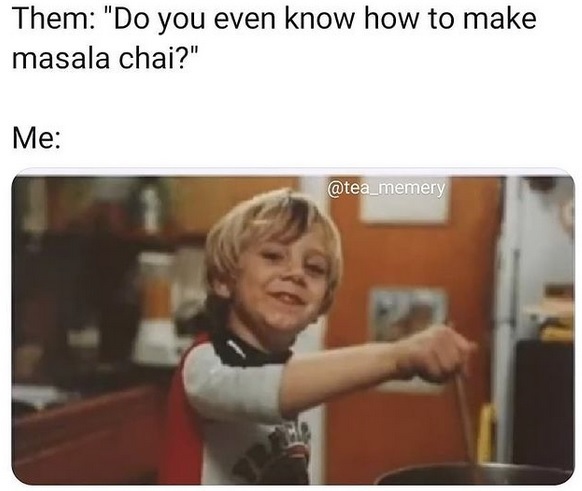
My expertise extents only as far as the etymological; as in, I know it’s a redundancy to call it “Chai Tea”. “Chai” literally translates to “Tea” from Hindi/Urdu—itself an iteration of the original Chinese word, Cha. “Masala” literally translates to “spiced”. So, “Masala Chai” is literally “Spiced Tea”. That’s about as far as my knowledge extends, well, besides drinking it.
This isn’t going to be a “History of Chai” blog. I mean, one would expect that from me at this point, but others have already tackled the subject. Fairly recently, too. The blog, Tea and Me, did a three-part series on the history and culture behind Masala Chai. Anything I could add would be even more redundant than saying “Chai Tea”. But here’s a quickie:

The British colonized India, stole tea seeds from China, brought said seeds to India, but they later found out India also had their own native tea plant variety—assamica. Those plants were used to clone, plot, and hedge out tea gardens in Assam and the Nilgiris. Test plots for other assamica gardens were added to other states, but they either weren’t feasible (at the time), or they were difficult to get to. And over the next century, Indians grew tea for the colonizers. But a fair amount of processed leaf still remained for local consumption.
So, they spiced things up—literally. Taking—oftentimes lower-grade, poorer processed—tea leaves, they cooked the hell out of it with spices, added milk to the concoction, let it cook overnight, or throughout the day, and voila! Masala Chai. This, of course, is a very quick-‘n-dirty summation, but so is Masala Chai.
Somewhere down the line, the local drink made its way internationally, and other countries began putting their own spin on it. Particularly the United States, which did everything to it short of putting it in a can or on a stick. (But they sure did try.)
During the Third Wave Coffee boom, Chai lattes were seen as a “healthier” alternative to the usual hipster fair. But this in no way tainted what a Masala Chai was. (Short of people just calling it “Chai” because . . . foreign words are hard, and one syllable is plenty.) The DIY punk aesthetic of Masala Chai as a concept allowed for experimentation. There was no set recipe, save for the inclusion of spices and a black tea base of some sort, and even that latter part was open to negotiation.
Which brings me to September of last year.
I got a message from a local-ish tea compatriot named Brigham. He and I had been trying for almost a year to touch bases, but could never seem to make it happen. That is, besides seeing each other whisk by at local tea festivals. Well, that particular week, he was taking classes in Portland, and wasn’t too far from my neck of the woods. We arranged a meet-up at a local matcha shop, all the while promising to observe pandemic protocols.
The reason for his visit. Well . . .
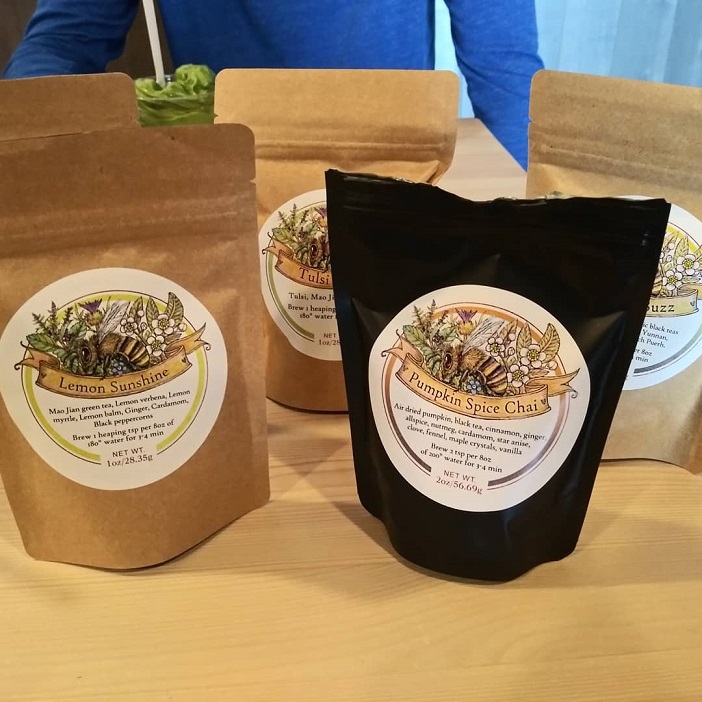
He had blends to share with me. A lot of them. I knew he and his wife, Ginger, made their own tea blends, but I didn’t know the full extent of their outfit; the Northfork 53 retreat.

Long story short. He had Ginger met online prior to 2015. At the time, Ginger was running her own off-the-grid farming op in and around Nehalem, Ore. Later on down the line, the neighboring farmhouse—owned by some good friends/mentors—became available. With some community help, they were able to sell the old outfit and buy the new. They, then, spent the next year fixing it up into an herb garden, wellness center, and bed-‘n-breakfast.
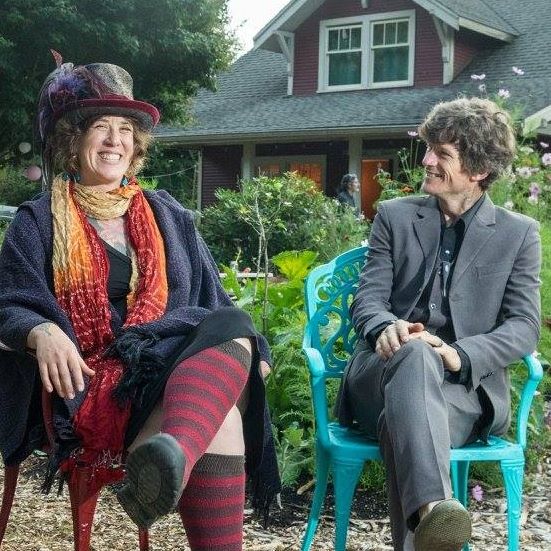
In my sporadic conversations with Brigham, I always made half-hearted promises to stop by at some point, but those empty words always blew away with the wind. The pandemic made it even less possible to schedule a visit. Due to the lockdowns in Oregon, Ginger and Brigham had to rethink their entire business model. They completely closed down the B&B aspect of their venture, and decided to go full-throttle with the tea blending side of their business. After all, they had a leg up in one arena. Not only did they do their own blending, but they also grew a lot of their ingredients on-site, and dried the batches themselves.
So, for the remainder of 2020, they hit the farmer’s market circuit.
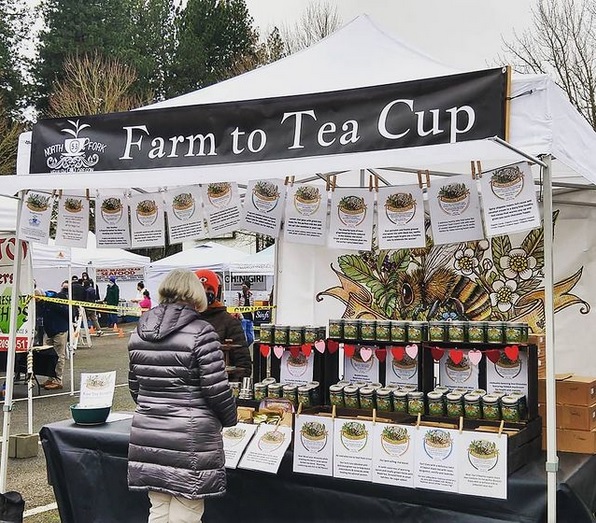
Of the blends they sent my way, I purposely wanted to focus on the Masala Chais in their arsenal. They sounded incredibly unique, even by roughneck spiced tea standards. In November, I dipped into their Pumpkin Spiced Chai . . . on Thanksgiving.
From what they tell me, this is their best seller, and it sold like hot cakes at the farmer’s markets in the autumn. No surprise. It’s a pumpkin spiced tea made with actual, air-dried pumpkin powder. No flavoring. Plus, some of the ingredients they grew on-site (as mentioned earlier).
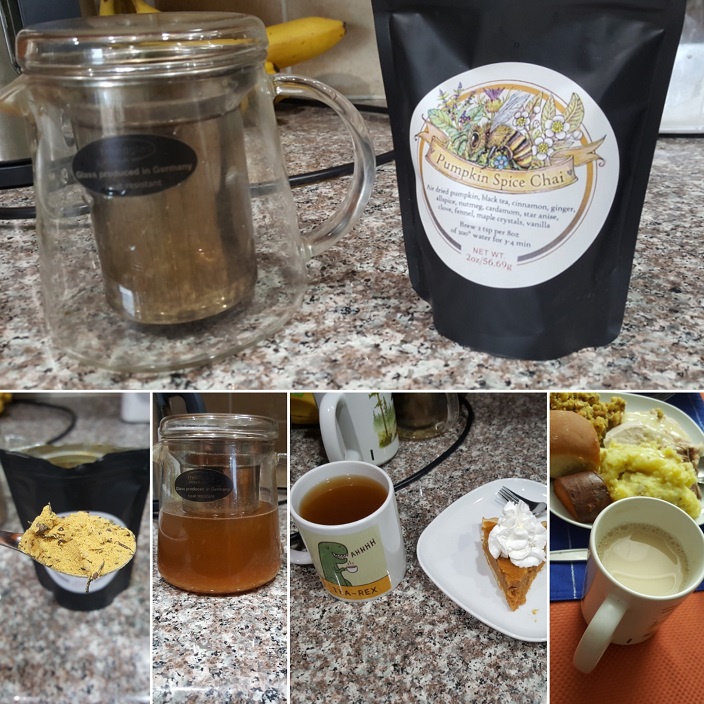
The only problem the pumpkin presented was its powdery form. Brigham recommended brewing it in a do-it-yourself sachet, which I did, but the rest of the ingredients didn’t decoct quite as well when I did it that way. Left with just a basket filter, sure, the powder bled through, but it dissipated pretty easily when brewed, and matched the consistency of the thick, Nilgiri black tea base.
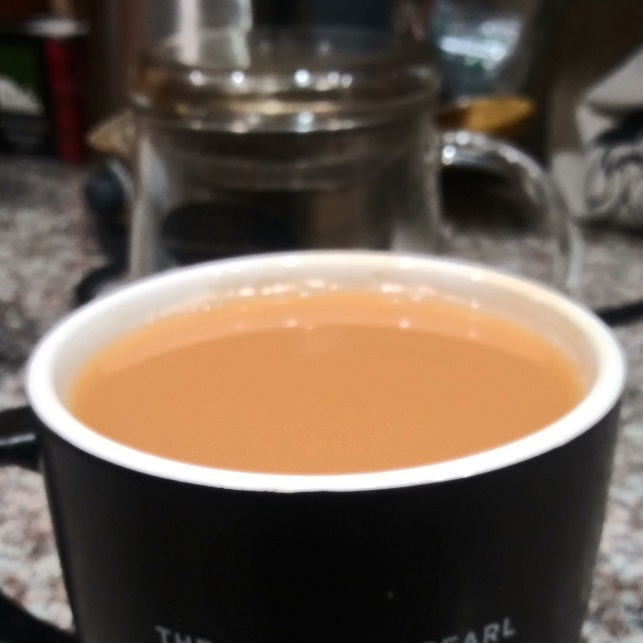
When combined with vanilla almond milk (added first because I’m not a heathen), it formed the perfect pumpkin-y latte. Cozy, comfortable, and crammed with flavor; paired well with pumpkin pie, too. Obviously.
While the Pumpkin Spiced Chai was their best seller, this was definitely their flagship. What separated this from your run-o’-the-mill spiced tea blend was that they included anise hyssop, fennel seed, and blackberry leaf grown on-site. Also different about this? The inclusion of stevia leaf in the mix, which I’ve never run into with a masala chai.
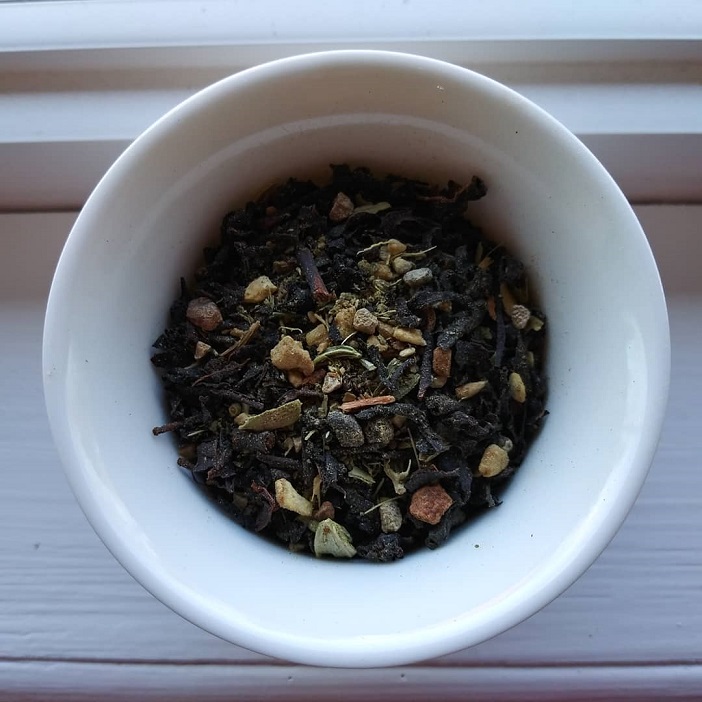
This was the perfect winter cuppa. Malty intro, spicy middle, sweet finish. The warm aftertaste lingered as well, and not in that cloying cardamom-heavy sorta way, more like an all-spice tongue-blanket. (That sounded sexier in my head.)
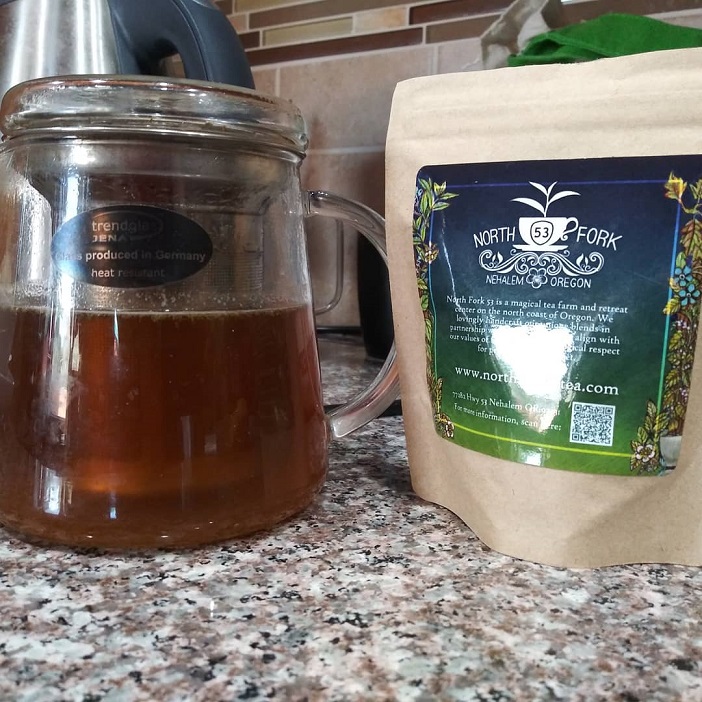
Definitely up there with some of the best spiced teas I’ve had in my long tenure. Granted, that’s not a huge list, but I do like feeling good. This made me feel good. These days, I’m all about feeling good in the most wholesome way possible.
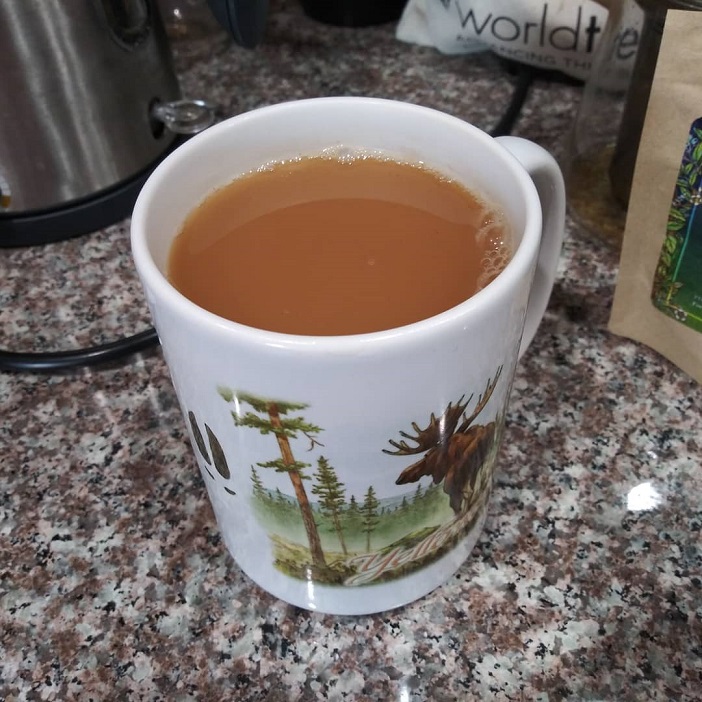
I still have plenty of their other wares to get to, but I’ve been a little slow on imbibing them. I, at least, wanted to get to their Chai offerings in a timely manner. And by “timely”, I mean before winter ended. Just under the cut-off, thankfully.
Trying these two blends did give me food for thought, though. “Chai Tea” is linguistically incorrect to grammarians, sure, but what of the shorthand—Chai? As far as I can tell, not even Indian mainlanders or desis hold hard-‘n-fast to the “only call it Masala Chai” rule. Need proof? Just look at all the Chai memes that exist on Instagram.
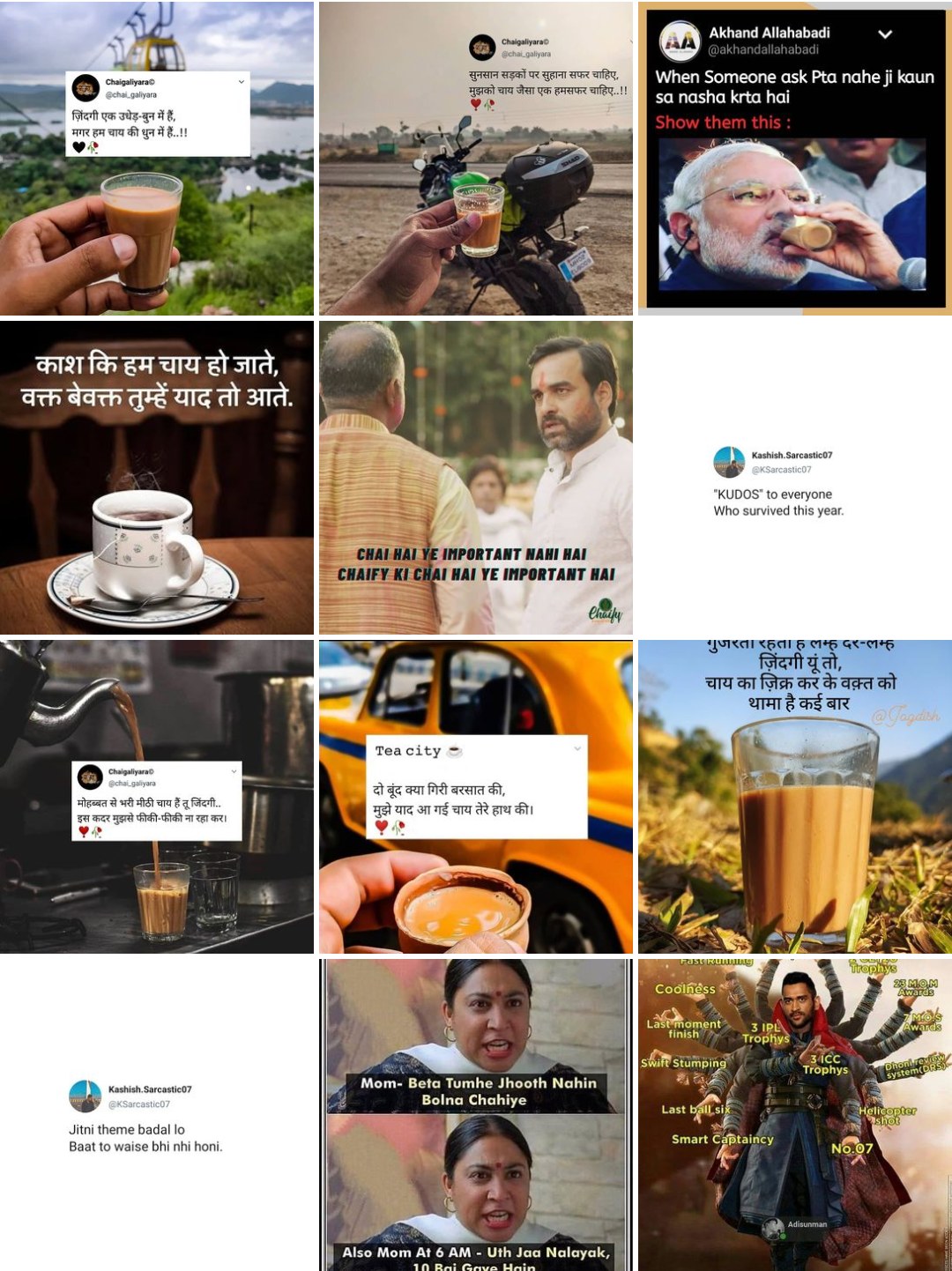
There are a lot of them.
They make a clear distinction between tea and Chai in those memes. Maybe they’re allowed to, whereas we occidentals aren’t? Or maybe we are, but only on our shores, since we’re not Hindi or Urdu speakers? I dunno. Honestly, I don’t think there are any set guidelines for that. Just like for Masala Chai itself.
Heck, just like for tea in general.
If at first you don’t succeed . . .
For more information on Northfork 53, go HERE.
To buy the Pumpkin Spiced Chai, go HERE.
To buy the Oregon Coast Chai, go HERE.
Leave a Reply to Margaret E Hutchinson Cancel reply